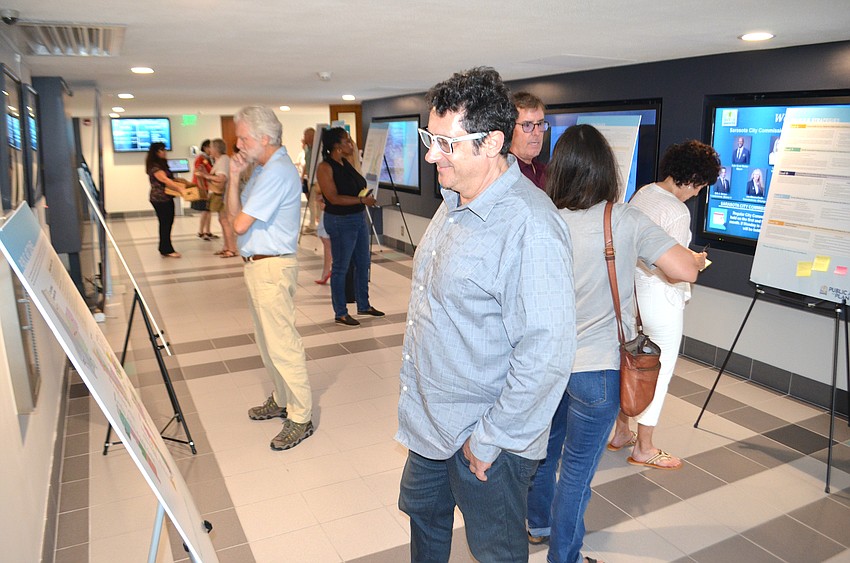- November 24, 2024
-
-
Loading

Loading

While Mary Davis Wallace discussed the preliminary results of 18 months of work in developing the Sarasota Public Art Plan 2030, more than a dozen display boards summarizing the 100-page-plus document lined the hall outside the meeting chamber at City Hall.
A basket filled with blank Post-It notes invited attendees to leave comments as part of the final stages of public engagement before Wallace, a city senior planner and public art lead, presents the final version of the plan to the City Commission, which she plans to do in August.
The seven-year plan is intended as the guiding document for the future of public art in the city with proposals to spread art installations throughout the city in a wide range of forms from asphalt painting to $250,000 sculptures in major roundabouts.
“Just to quote someone, and I don't want to embarrass that person, but the arts are Sarasota’s superpower,” Wallace told the audience. “And it really affected me. That made me feel good about what we're doing.”
Wallace is careful to use the word “we” when discussing the development of the public art plan. She considers harnessing that superpower for the city's overall greater good a group endeavor. That includes the development community that provides the funding for public art to the city’s Public Art Committee, and art enthusiasts in between. And she wants to share the city’s downtown-centric collection throughout the community.
This could include relocating some pieces into the neighborhoods in addition to commissions and acquisitions.
“We recognize the value of public art as it applies to urban and economic development. We have a huge tourist attraction to the city for the arts,” Wallace said. “The big thing for me is for the Public Art Committee and for city leadership to understand public art is not a side dish to economic success. It is an ingredient in the main dish. This is something that we need to be baking into everything that we do.”

Perhaps the main ingredient in the public art dish is funding. The city’s public art initiative is fully funded by a 0.5% surcharge paid by developers on projects costing at least $1 million. Among Wallace’s proposal is doubling that surcharge on what she said is a supportive development community.
“They understand the value the arts play in their development,” Wallace said. "You're moving here, you're buying a new condo, and moving here because it's a vibrant arts city. We have to at some point have the discussion that we want to be able to have a full 1% for our program.”
Wallace will now embark on meetings with neighborhood groups and others to receive one more round of public engagement before finalizing the plan.
“What we are going to do is create a legacy for the future,” Wallace said. “Let’s jump on the coattails of our legacy and move this into the next generation because we have a lot of young people coming into our city. They need to know where this city came from, but also how they can become a part of our legacy.”